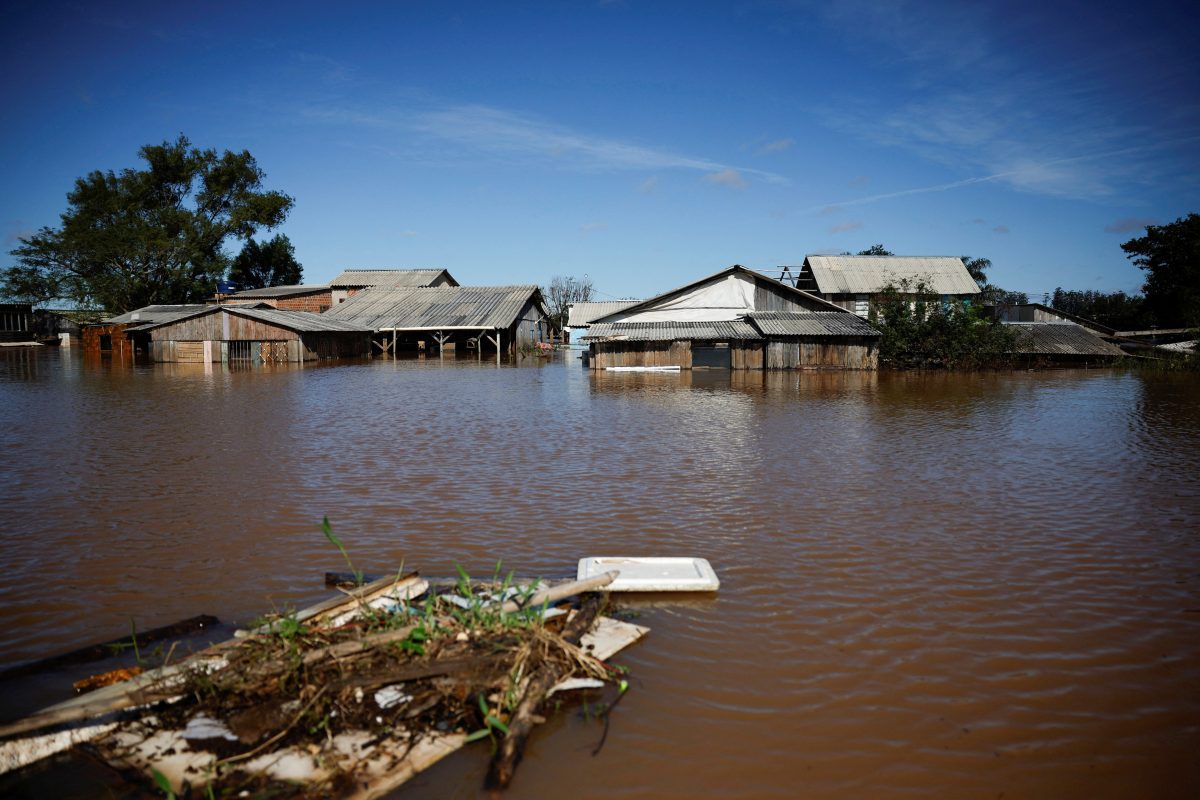PORTO ALEGRE, Brazil, (Reuters) – Brazil’s southernmost state capital may suffer severe flooding for weeks to come, experts warn, compounding the struggles of half a million people forced to abandon their inundated homes.
Parts of Rio Grande do Sul state have seen more than 630 mm (25 inches) of rain so far this month, national weather service INMET reported – more than London’s average rainfall in a year.
The waters of Lake Guaiba, which breached its banks to flood state capital Porto Alegre, have risen again this week to 5.22 meters (17.13 feet), well above the flood level of 3.0 meters and close to last week’s all-time record of 5.33 meters.
Meteorologists and engineers at the Federal University of Rio Grande do Sul (UFRGS) said water levels could stabilize or keep rising if it rains again. They said it could take a month before the water retreats below flood levels, based on historical comparisons.
The floods have devastated dozens of towns inland from Porto Alegre, where the downtown area remains under water, killing at least 148 and leaving 124 still missing.
More than 267,000 addresses are still without power and 159,000 people have lost access to water, state officials said.
An initial forecast from the UFRGS Institute of Hydraulic Research (IP) suggested the water could take 35 days to return to normal levels based on the previous worst flood in 1941, when it reached 4.76 meters. Tributaries upstream are expected to normalize before then.
Lake Guaiba should return slowly to below flood levels within weeks or even by mid-June, said IPH Professor Rodrigo Paiva, but he added that it will depend on the weather ahead.
“That may be delayed if it rains more. In 1941 we didn’t have the rebound we have now,” said IPH hydrologist Fernando Fan.
Renewed rainfall over the last few days led to a new rise in the Guaiba water level, leading authorities to warn residents not to return to areas at risk.
On the roadside where they sought high ground outside the inundated fishing hamlet of Paquetá, 25 km north of Porto Alegre, villagers are watching the water level closely.
On May 1, after two days of intense rain, a broken dike flooded the area outside Porto Alegre, where on Tuesday only the rooftops of the village can be seen.
“We are waiting for it to go down. We were happy that it was falling, but now it has started to rise again. It will take at least two months,” said Cristiano Pastoriza.
“We could only leave with the clothes we were wearing and our documents,” the 58-year-old fisherman told Reuters.
Moacir Lopes said the fish will not return until the river returns to its normal course.
“It will take a long time to return, two or three months. All this bad water has to be drained. When the new water comes, the fish will come back,” he said.
The fishermen used their boats to rescue residents in the severely flooded neighboring village of Canoas.
“When I saw people on the roofs, little children, I cried, it broke my heart,” he said.

